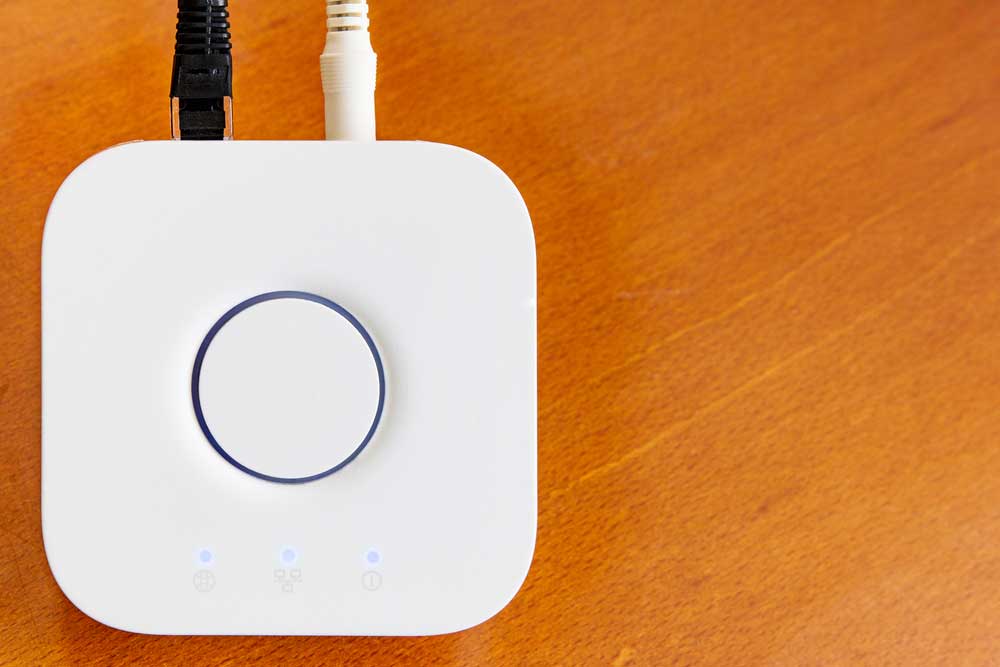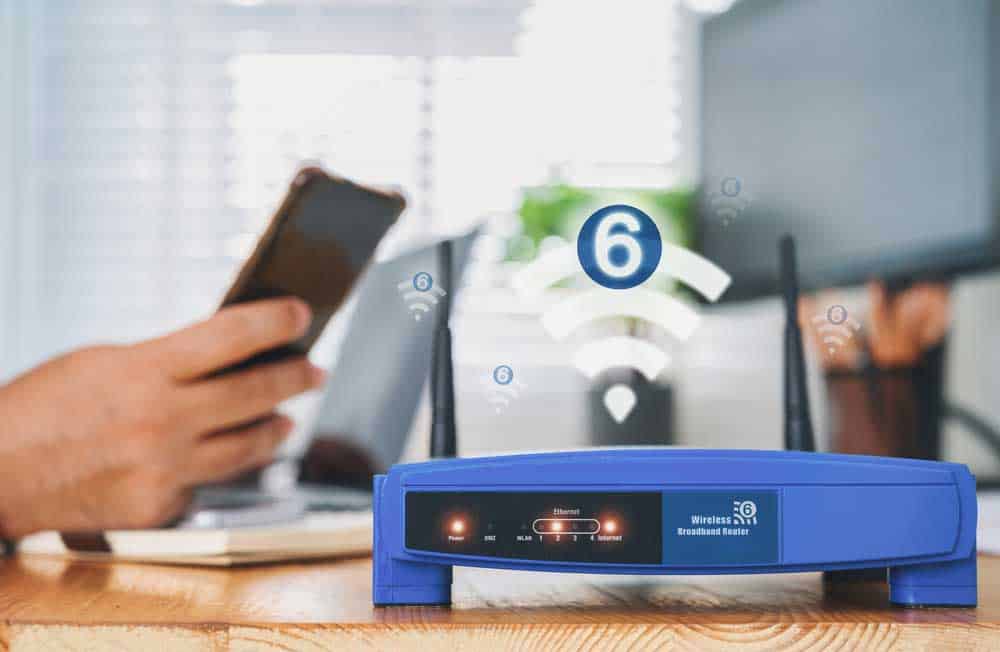Mesh WiFi systems have revolutionized wireless networks by expanding wireless coverage using a multiple-node architecture. Compared to traditional routers, mesh routers come as sets of at least three nodes for connecting and distributing across your home. Two of the best Mesh WiFi systems in the market come from Eero and Google. We will compare Eero Mesh vs. Google Mesh in six categories to determine the best one for your needs. Let’s get right into it!
Table of Contents
Comparison
Before getting into the comparison, we must mention that the comparison is between the brand’s flagship mesh network systems. These are the Eero Pro 6E and Google Nest WiFi Pro.
Eero Mesh vs. Google Mesh: Design
The first thing you notice straight out of the box is the design. Eero mesh kits contain routers with a minimalist design and small form factor. Like the previous generations, the current Pro 6E is in a compact square case with a trapezoidal cross-section, rounded corners, and a white glossy finish.
The device measures 139 x 139 x 55.23mm and has one auto-sensing Gigabit ethernet port and another auto-sensing 2.5 GbE ethernet port for WAN or LAN connectivity (or both). You can get the Eero Pro 6E as a one, two, or three-pack.

A USB-ethernet adapter with a 10/100/1000 gigabit ethernet port
Google WiFi routers also adopt a small form factor, with a rectangular shape that measures 130 x 117 x 85mm. The product comes in either a three, two, or single-pack, with each standalone router having two Gigabit Ethernet ports and a snow, fog, lemongrass, or linen color exterior.
The two devices score a tie here because there’s nothing wrong with the designs, and each has two Gigabit ethernet ports. Also, each mesh system has one status light on the devices.
Verdict: Eero Mesh 1, Google Mesh 1
Eero Mesh vs. Google Mesh: Setup
Setting up both mesh router systems requires an Android or iOS app. With Eero, download the Eero app from the store, create an Eero account or use your Amazon account to log in. You will have to enter your phone number to receive a verification code. The primary router in the set is the gateway, and you’ll have to set it up to establish your network.
The app will guide you through setting up the gateway, creating your Eero network, and connecting additional mesh nodes to your network.
With Google mesh, download the Google Home app, then plug in the base router to your ISP’s router or modem to create the wireless network. Next, connect the satellite nodes to create the mesh network.
Both apps give clear setup instructions, which you can also get from their respective websites.
Router App Settings
Once set up, the Google app gives you access to the following settings:
- Priority device (for time-sensitive data stream optimization)
- Guest WiFi
- Home control settings (for connecting smart home devices via the IFTTT protocol)
- Family WiFi
- Grouping devices using labels
- SafeSearch site blocking
- Port forwarding
- DNS, UPnP, & DHCP IP reservations
- IPV6 support
On the other hand, the Eero home WiFi app features include the following.
- Family profile
- Guest access
- NAT reservations
- IPV6 and thread device commissioning support
- UPnP, DNS, & port forwarding
The app also includes parental control features (content filtering and SafeSearch) and system protection services like anti-malware, anti-ransomware, antivirus, and anti-phishing. But you must pay for these under the Eero secure or Eero plus monthly subscription packages.

The parental control feature for child protection
So both are easy to install, configure, and monitor but lack a web-based interface that would have given more sophisticated control settings. The Eero app has more features, such as creating profiles for every user and device, which is ideal for parents who want to schedule internet access times and pause periods for sleeping, meals, etc.
However, Google mesh is better because it provides the SafeSearch site blocking for parental control for free. So it wins. Paying all that money to buy the hardware and then spending extra for a subscription fee of up to $9.99 monthly does not make sense.
Verdict: Eero Mesh 1, Google Mesh 2
Eero Mesh vs. Google Mesh: Hardware
Each Google Nest WiFi Pro base and secondary unit features a Qualcomm SoC IPQ5018 dual-core A35 processor clocked at 1GHz with 1GB DDR3L RAM and 8GB eMMC flash memory.

A dual-core processor
On the other hand, the Eero Pro 6E runs on a dual-core 1GHz processor with 1GB RAM and 4GB flash storage. Both mesh router systems can function as a smart home hub because they have Bluetooth Low Energy.
But the Eero mesh WiFi has the additional Amazon Frustration-Free Setup (FFS) for smart home connectivity. So you can control the supported Zigbee and Thread devices using Alexa. Additionally, the base unit can act as a border router to facilitate communications with thread-enabled devices.

A smart home hub
The Nest WiFi Pro can function as a thread border router and is matter enabled. So you can connect your favorite smart home brands. We have another tie.
Verdict: Eero Mesh 2, Google Mesh 3
Eero Mesh vs. Google Mesh: Features and Performance
Here comes the fascinating part. Both wireless router systems can handle up to 100 connected devices. The Google Nest Pro WiFi router supports WiFi 6E, making it a tri-band system (2.4GHz, 5GHz, and 6GHz). Also known as 802.11ax, WiFi 6E in the Nest Pro utilizes the AXE5400 standard (MU-MIMO). So it can hit combined speeds of up to 5.4Gbps.

A wireless router with WiFi 6 technology
Eero also supports WiFi 6E. So it is a tri-band system with an additional 6GHz band that frees up the 2.4GHz and 5GHz bands for data transmission in wireless connections. So the WiFi 6E gives faster throughput wireless speeds of up to 1.6Gbps with lower latency.
But if you use ethernet cables to create a wired connection, you can get faster speeds of up to 2.3Gbps. The Nest Pro has two ethernet ports like its competitor, but these only support speeds of up to 1Gbps. So the Eero is faster with wired connections, but the Nest Pro has faster wireless connections.
Therefore, both devices can support VR/AR, 8K streaming, or multiple 4K video streams.
One more thing. Each Google Nest Pro base or secondary unit provides 2,200 square feet of coverage, while Eero can cover 2,000 square feet per device. So the Nest Pro wins by a small margin.
Verdict: Eero Mesh 2, Google Mesh 4
Eero Mesh vs. Google Mesh: Compatibility
In the Google mesh WiFi router family, there is the Google Nest WiFi, Nest WiFi Pro, and Google WiFi. You cannot combine the Nest WiFi Pro in a mesh network with the previous generation Google WiFi or Nest WiFi base routers or nodes. These are dual-band systems (2.4GHz and 5GHz). So they won’t work with the newer tri-band WiFi 6E.

A dual-band wireless AC router
However, the Eero Pro 6E is compatible with older generations of Eero mesh systems and can operate with the units in the same mesh network. So if you had bought the previous version Eero mesh system earlier, you can get this new one and join the two.
But there is a catch. You won’t get the best performance. If you want excellent performance, only use the same generation Amazon Eero devices in your network.

A sleek WiFi 6 router
Since the Eero WiFi system is backward compatible, you need to use one unit as the primary router by connecting it to the modem via an ethernet connection. You can use either of the following units as the gateway.
- Eero Pro 6E
- Eero Pro 6
- Eero 6+
- Eero 6
- Eero
- Eero Pro
Once you set up the base router, use any combination of wired, wireless, or both Eero secondary units (including the Eero Beacon) to create the mesh network. So Eero wins in this category.
Verdict: Eero Mesh 3, Google Mesh 4
Eero Mesh vs. Google Mesh: Price
Both mesh systems come as single, twin, or three packs. The Eero three-pack costs $699, while the Nest Pro goes for $319. For the two-pack, you’ll have to pay $499 for the Eero and $239 for the Nest Pro. Single packs cost $299 and $159, respectively. And remember, you might have to pay a monthly or annual subscription to activate some services in the Eero mesh. So Google Nest Pro wins.
Verdict: Eero Mesh 3, Google Mesh 5
Final Verdict
The final verdict is clear; Google Mesh wins. But this is our comparison. You might have different requirements that put the Eero mesh system above the Nest Pro for your home. And it is vital to mention that Eero has more devices under its lineup. So go through their products and features in detail to see which device suits your needs and budget. And drop a comment below if you have any questions.
